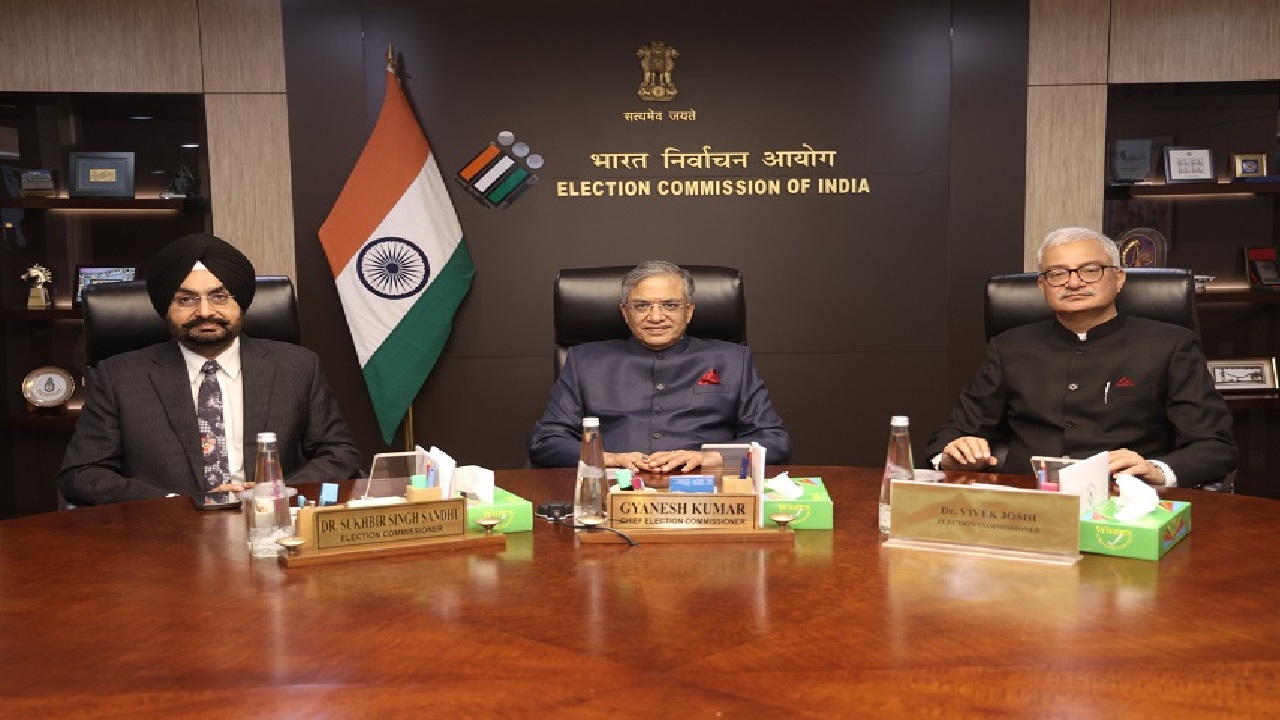A Historic Leap in Indian Electoral Practice
The Election Commission of India (ECI) created history during the latest by-elections by implementing several technological innovations for the first time. Held across five Assembly constituencies in four states—Kadi (SC) and Visavadar in Gujarat, Nilambur in Kerala, Ludhiana West in Punjab, and Kaliganj in West Bengal—the elections saw the rollout of advanced systems designed to enhance transparency, accessibility, and real-time monitoring.
ECI’s Evolution: A Journey of Tech-Driven Democracy
Since its inception in 1950, the Election Commission of India has consistently evolved to meet the demands of a growing democracy. From the adoption of Electronic Voting Machines (EVMs) in the late 1990s to the recent integration of the Voter Helpline app and digital voter ID, ECI has embraced technology as a critical pillar of electoral reform. This latest set of innovations marks another milestone in its commitment to making elections more inclusive, secure, and efficient.
The Breakthroughs: What’s New This Time
Under the leadership of Chief Election Commissioner Gyanesh Kumar, and Election Commissioners Dr. Sukhbir Singh Sandhu and Dr. Vivek Joshi, the Commission introduced and successfully implemented several pioneering measures:
1. Mobile Deposit Facility
In a first, mobile deposit boxes were provided at every polling station. Recognizing the practical inconvenience posed by mobile phone restrictions, especially for senior citizens, women, and differently abled voters, the ECI introduced pigeonhole-style lockers and jute bags to safely store phones before voters entered polling booths.
2. Real-Time Voter Turnout Reporting
The new VTR (Voter Turnout Reporting) system enabled presiding officers to update turnout data directly through the ECI-Net app every two hours. This reduced the usual reporting lag and allowed timely, constituency-wide aggregation of voter participation trends throughout polling day.
3. 100% Webcasting for Transparency
For the first time, nearly all polling stations—across 1,354 locations—were equipped with webcasting facilities. This allowed real-time surveillance of electoral activities, ensuring compliance with protocols and immediate response to any discrepancies. Dedicated monitoring teams at the Returning Officer (RO), District Election Officer (DEO), and Chief Electoral Officer (CEO) levels supervised the webcasts.
4. Enhanced Training and Preparation
All Presiding Officers were given personalized training, including participation in mock polling exercises to ensure preparedness. This hands-on approach minimized procedural errors and improved the efficiency of poll-day operations.
5. Pre-Poll Electoral Roll Revision
For the first time in nearly two decades, a Special Summary Revision (SSR) of the Electoral Rolls was conducted ahead of the by-elections. This ensured cleaner rolls and reduced instances of outdated or inaccurate voter data.
Implications for the Future: Bihar and Beyond
The smooth and successful deployment of these innovations in the recent by-elections has laid the groundwork for full-scale implementation during the upcoming Bihar Assembly elections. It demonstrates the ECI’s capability and willingness to scale up transformative practices to ensure better voter experience and stronger democratic processes.
A Bold Step Towards Smarter Elections
The Election Commission’s bold steps in the by-elections signal a significant evolution in India’s electoral architecture. By addressing long-standing voter convenience issues and embracing real-time monitoring tools, the ECI has not only enhanced transparency but also built trust in the system. These initiatives reflect a future-ready vision, where technology empowers democracy—not just administratively but experientially. The reforms must now be institutionalized and scaled to ensure every Indian vote is cast and counted with utmost ease and confidence.
(With agency inputs)








